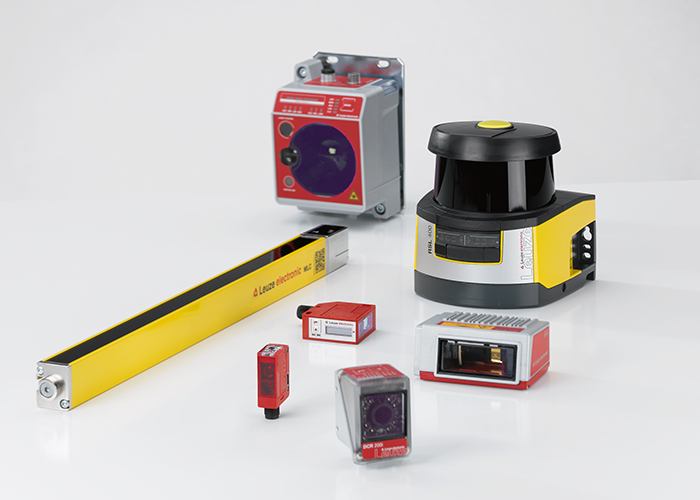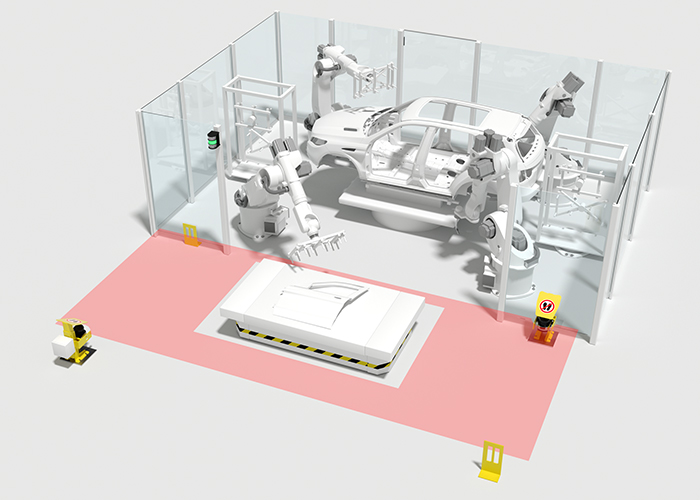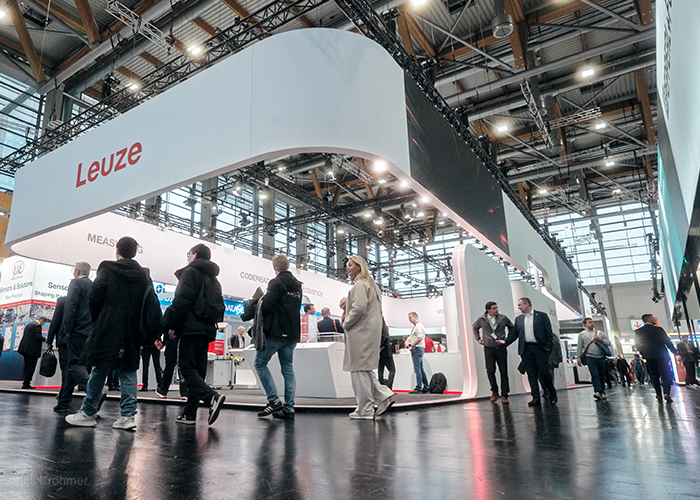Safety switches

Advantages for you
- Simple integration in safety circuits: All safety switches can easily be integrated in a safety circuit by means of positive opening contacts
- Cost‑effective: The S20 / S200 safety switches provide a cost‑effective solution for monitoring doors and flaps
- High level of protection against manipulation: Thanks to the switching function encapsulated in the device, the S400 safety hinge switches offer a high level of protection against manipulation
Know-how
Areas of application
Safety switches are used in numerous industries, such as intralogistics, the packaging industry, the automotive industry or the machine tools industry. Here, they monitor guards as well as final positions.
Switches with separate actuator
S20 / S200
Universal application
- Variety of actuators for adaptation to the installation situation
- Five different approach directions for the actuator
- Different contact configurations
- Connection via cable or connector
- Robust housing
- Funnel-shaped insertion opening with centering of the actuator for reliable operation
Position switches
S300
Monitoring of final positions
- For position monitoring on machines and for the monitoring of laterally sliding guards
- Variants with plunger and various actuators enable optimum adaptation to the installation situation
- Robust housing
Hinge switches
S400
Monitoring of guards that can rotate
- Hinge switches unite the safety switch and door hinge functions in a single component with appealing design
- With their encapsulated design, they offer a high level of protection against manipulation and are only recognizable as safety devices to specialist technicians
- Passive hinge as second fastening element in the same, uniform design
- Models with wide mounting fork are available for use on delicate glass or plastic parts
Which standards are important for safety switches?
International standard ISO 14119 describes guidelines for the selection of interlock devices in combination with guards. The term interlock device stands for safety switches that are, for example, mounted on safety doors or flaps and trigger a safe shutdown of the machine or system upon opening of the protective device. The complete designation of ISO 14119 is: Safety of machinery – Interlocking devices associated with guards – Principles for design and selection. The standard defines four different types of interlock devices and lists their advantages and disadvantages. It also addresses measures for minimizing the bypassing of interlock devices.
Technical properties
|
|
S20/200 |
S300 |
S400 |
| Type 2 interlock device without guard interlocking in acc. with EN ISO 14119 | Type 1 interlock device without guard interlocking in acc. with EN ISO 14119 | Type 1 interlock device without guard interlocking in acc. with EN ISO 14119 | |
| S20: Technopolymer housing, degree of protection IP 67 S200: Metal housing, degree of protection IP 67 | Technopolymer and metal housing, degree of protection IP 67 | Metal housing, degrees of protection IP 67 / IP 69K | |
| Actuator with mechanical tongue and low coding level in acc. with EN ISO 14119 | Actuation by unencoded cam in accordance with EN ISO 141169 | Actuation by encapsulated position switch inside hinge, high level of protection against manipulation | |
| Positive-opening contacts for integration in a safety circuit | Positive-opening contacts for integration in a safety circuit | Positive-opening contacts for integration in a safety circuit | |
| The head is adjustable in 90 degree increments. In combination with entry from above, 5 approach directions are available for the actuators. | Switching direction selectable | Concealed cable routing thanks to connection on rear side | |
| Up to 8 different actuators | Variants with plunger actuator and various roll actuators | Maximum opening angle of 180 degrees for the protective device | |
| High-quality silver contacts for long life expectancy | Extremely durable and robust | Adjustable switching point | |
| Model S410 with wide fork dimension for special materials, e.g. glass | |||
| Optional additional hinges (without contacts, mechanical function only) |












